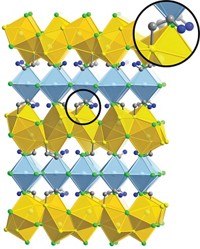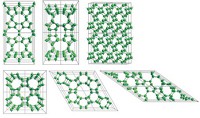Advertisement
Grab your lab coat. Let's get started
Welcome!
Welcome!
Create an account below to get 6 C&EN articles per month, receive newsletters and more - all free.
It seems this is your first time logging in online. Please enter the following information to continue.
As an ACS member you automatically get access to this site. All we need is few more details to create your reading experience.
Not you? Sign in with a different account.
Not you? Sign in with a different account.
ERROR 1
ERROR 1
ERROR 2
ERROR 2
ERROR 2
ERROR 2
ERROR 2
Password and Confirm password must match.
If you have an ACS member number, please enter it here so we can link this account to your membership. (optional)
ERROR 2
ACS values your privacy. By submitting your information, you are gaining access to C&EN and subscribing to our weekly newsletter. We use the information you provide to make your reading experience better, and we will never sell your data to third party members.
Materials
Metal Clusters Designed For Computer Memory
Technology demands more storage in ever-shrinking devices, so chemists propose polyoxometalates as flash memory nanocomponents
by Bethany Halford
November 24, 2014
| A version of this story appeared in
Volume 92, Issue 47
Seeking to keep up with technology’s relentless drive for smaller and smaller electronic components, chemists have developed molecules that could be the next big little thing in flash memory storage. In flash memory, components can be erased and reprogrammed using electricity. Flash memory components currently in computers and smartphones use metal oxide semiconductor materials. But scaling down these materials further while increasing storage capacity has been challenging. Researchers have suggested using single molecules as flash memory components. However, the molecules that have been proposed so far suffer from low electrical conductivity, high resistance, and finite thermal stability. Scientists led by Leroy Cronin of the University of Glasgow believe polyoxometalate clusters, such as [W18O54(SeO3)2]4–, can circumvent these problems (Nature 2014, DOI: 10.1038/nature13951). “Not only do the clusters act as perfect examples of trapped charge essential for flash memory programming,” Cronin explains, but “electronically active dopants within the clusters can be shifted between two oxidation states, Se(IV) to Se(V), giving a new type of memory behavior.” Cronin’s group has demonstrated that polyoxometalates are compatible with current device-fabrication technology.





Join the conversation
Contact the reporter
Submit a Letter to the Editor for publication
Engage with us on Twitter